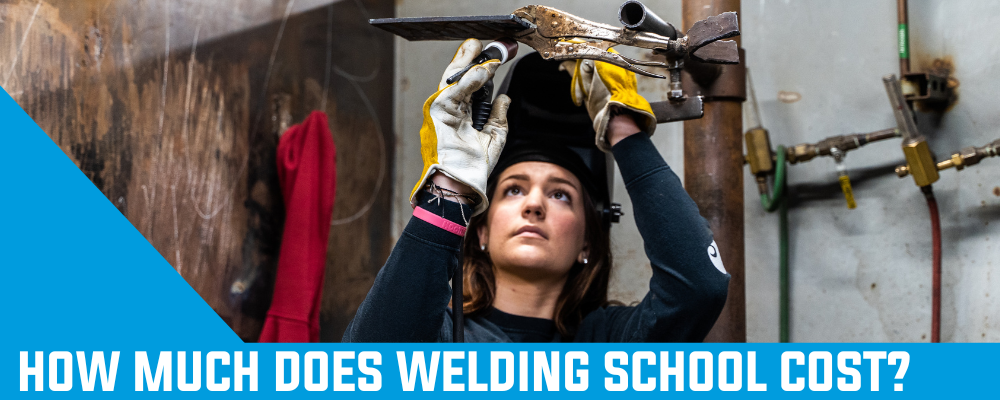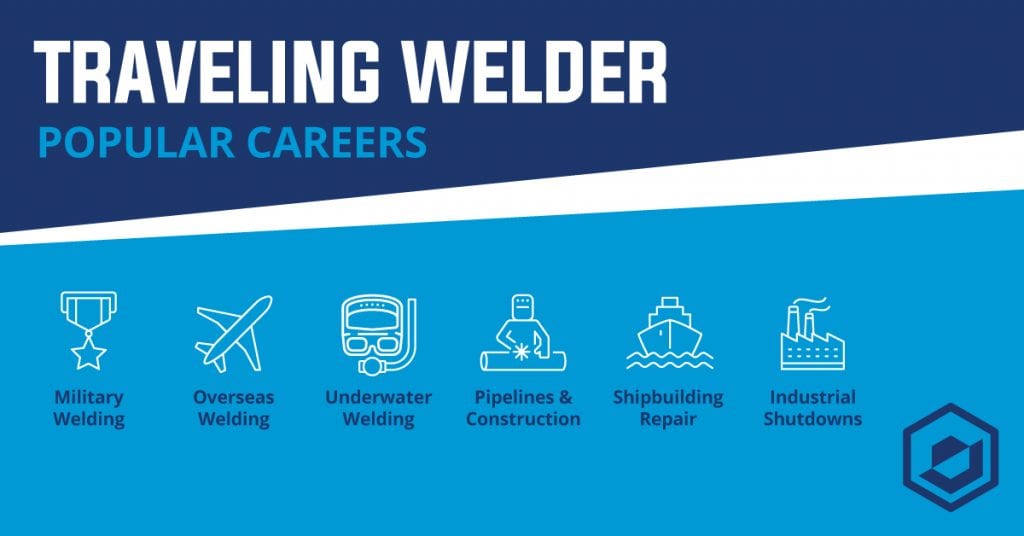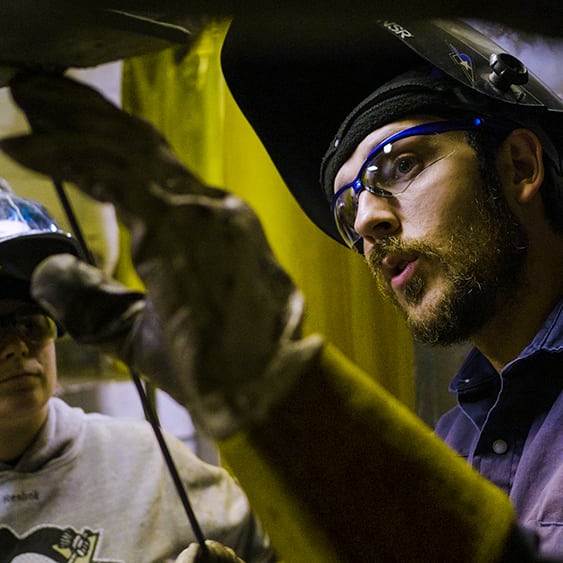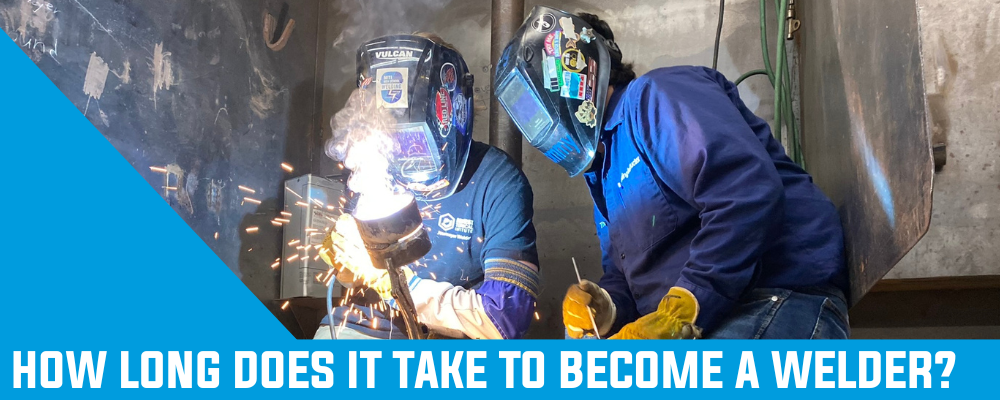Becoming a welder generally requires completing technical skills training and gaining hands-on experience to land an entry-level job. That’s because welding is a skilled trade that demands focus, skill, and safety.
The decision to enroll in welding school to attain these skills can be an investment in a lifelong career. But how much is welding school?
How much is welding school?
According to Welding Career Now, welding school costs can range from as little as $5,000 to as much as $30,000 . Tuition for welding programs depends on the length of program, state or regional location, and the type of training. Some welding programs take just a few months to complete while more specialized programs can last up to 10 months.
Where to learn welding
Welding education is offered at trade schools, community colleges, and some vocational high school programs. The cost of welding training depends on several factors, including the specific type of welding program. Longer programs generally incorporate more in-depth skills training, which can help improve your employability and earning potential.
When researching welding schools and associated costs, it’s important to consider factors like class size, the balance between hands-on instruction versus theory/classroom, and whether you will earn any welding certifications during the program.
The School of Welding at MTI focuses on hands-on training to prepare you to become a welder and pipefitter. You will earn MTI Welding Certifications and learn a variety of welding techniques, including:
- Shielded Metal Arc Welding (SMAW)
- Gas Tungsten Arc Gas Welding (GTAW/TIG)
- Gas Metal Arc Welding (GMAW/MIG)
- Flux Core Arc Welding (FCAW)
Interested in Learning More About Welding?
Fill out the form below to receive info about our career training programs.
Different levels of welder training cost
Costs for welding programs at trade schools vary based on the length of the program and the specific training provided.
For example, MTI’s Welding Program is a 7-month program that prepares students for entry-level welding and pipefitting roles. MTI’s Welding & Pipefitting Program is a 10-month program that expands on the pipefitter training with 10 more weeks of advanced pipe fitting training.
At MTI, all tuition (where applicable) includes:
- Fees
- Books
- Metals
- Gear
- Tool Kit
The tool kit includes tig gloves, welding gloves, work gloves, leathers, chipping hammer, wire brush, soapstone, safety glasses, striker, tip cleaner, hood, channel locks, welding cap, bucket, file, and cutting goggles.
How do you pay for welding school?
Students in welding programs at trade schools are eligible for the same types of financial aid as traditional college students. This includes:
- Federal Grants
- Federal Low-Interest Student Loans
- GI Bill® Assistance (for veterans and children of veterans)
MTI is approved by the United States Department of Education to participate in the Federal Financial Aid Program. MTI offers a variety of financing options to qualifying students. For more information, visit Financial Aid.
How to Apply for Welding Scholarships
Some welding trade schools offer scholarships for qualifying students. MTI offers a scholarship for high school seniors who are interested in a career in welding. Scholarship amounts vary and in some cases can cover the full cost of tuition for our welding programs. MTI also offers an annual High School Welding Competition for seniors interested in a career in welding. Various scholarships are awarded to participants and winners.
You can also search for external scholarship programs to help you pay tuition at a welding school, such as MTI. The American Welding Society offers a list of scholarship opportunities available at the national level. MTI also maintains a list of scholarship opportunities.
Are there any welding licensing requirements in Illinois or Missouri?
There are no licensing requirements in Illinois or Missouri, where MTI offers welding schools. In these states, a welder does not need to pass any kind of state exam to begin working.
However, holding a welding certification can improve your employment potential. Some employers look for specific certifications from accredited organizations, particularly for certain welding specialties. MTI’s welding certifications help employers validate your welding skills and can potentially help increase your employability in the welding industry.
The American Welding Society (AWS) offers a Certified Welder exam. This exam measures your welding performance. Passing this exam shows employers that you are an AWS Certified Welder. AWS also offers other types of exams at different price points for different purposes. Check the AWS Certification & Education Programs Price List for the most up to date costs.
Should you pursue a career in welding?
Skilled trades are on the rise, making it a great time to consider a career in welding. According to the Bureau of Labor Statistics, welders earn a median annual salary of $48,940 , and an estimated 45,800 openings in the field are projected each year through 2033.
Looking for a welding trade school in Missouri or Illinois? Fill out the form below to learn more or schedule a tour of your local MTI welding school.
Sources
- https://weldingcareernow.com/articles/how-much-does-welding-school-cost
- https://www.aws.org/foundation/page/scholarships
- https://www.aws.org/library/doclib/PROGRAMS-PRICELIST-2022.pdf https://www.npr.org/2023/02/14/1155405249/high-paying-jobs-that-dont-need-a-college-degree-thousands-of-them-are-sitting-e
- https://www.bls.gov/ooh/production/welders-cutters-solderers-and-brazers.htm#tab-5
- https://www.bls.gov/ooh/production/welders-cutters-solderers-and-brazers.htm#tab-6



